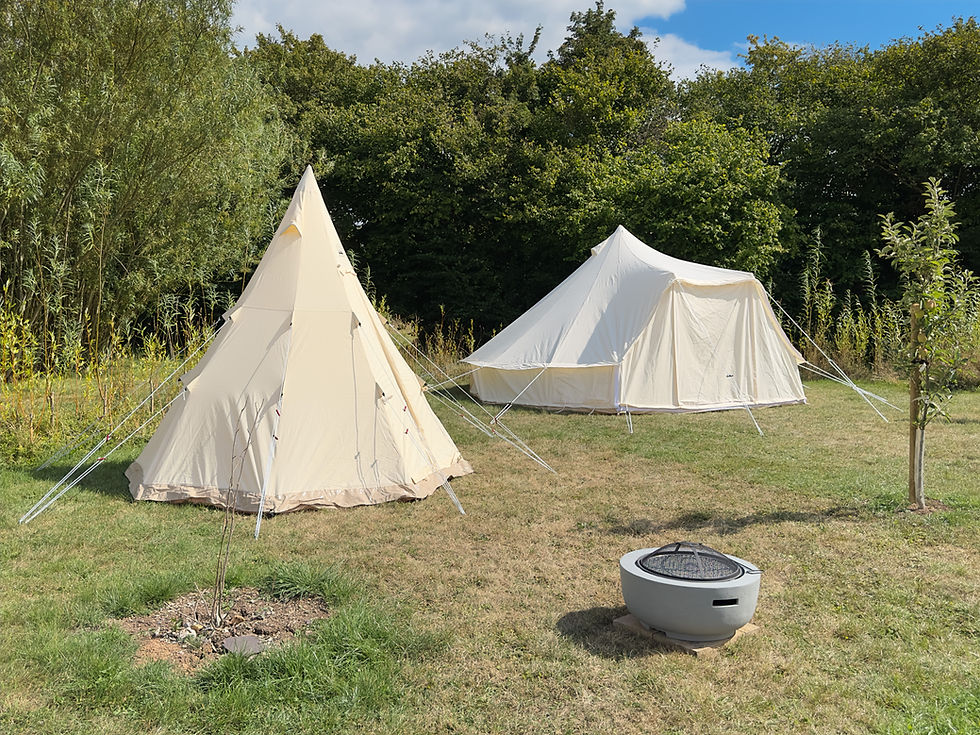Tips for using and maintaining cotton canvas tents
- Alex Si
- Sep 26, 2023
- 2 min read
With the increasing demand for outdoor recreation and entertainment, more and more cotton canvas tents, due to their breathable, durable and environmentally friendly advantages, are appearing in campsites. To ensure the longevity, functionality and camping comfort of your cotton canvas tent, it's important to remember some tips for daily use and maintenance.

Precautions for use
1, Keep away from acid, alkali and oil to prevent corrosion and deformation.
2, Keep away from fire.
3, When the wind is strong or the weather is unsuitable for tenting, please keep the tent in a safe place.
4, Avoid contacting with sharp and pointed items to prevent scratching.
5, Light-coloured cotton canvas do not contact with carbon ink and other items that are difficult to clean.
6, If there are any minor problems such as broken lines, dropped lines, or loose fittings, they should be repaired in time.
7, When camping under the tree, you should pay attention to the branches and tree glue. If it can not be avoided, please add pieces of protective cover. When in the strong sunshine or ultraviolet rays, it is recommended to configure the protective cover.
8, If the tent is tearing or cracking, contact the manufacturer for repairs ,so it can prevent the hole from widening or prevent the tarp from being scrapped.
9, In the event of a typhoon or long time strong winds, remove the windward side of the tarp and check that the ground pegs and ropes are secure to prevent the fabric from being torn. If it is too late to dismantle the tarp, use a knife or sharp object to cut through the windward side to maintain the stability of the whole tarp.


Washing and Maintenance
1, Washing method, divided into dismantling and non-disassembling washing. ①Detachable washing: Scrub the fabric flat on the ground and dry it in the sunshine or in a ventilated place before use. ②Non-dismantling washing: use aerial work tools to wash under the premise of ensuring safety.
2, Cleaning tools, it is recommended to use plastic brushes or rags, metal brushes are prone to cause thread breakage. With a rag or plastic brush, dipped in detergent wipe, water rinse the poncho and put in a ventilated cool place or sunlight to dry naturally.
3, Anti-mould, it is important to remove mould in time. Common mould removal methods include cleaning with vinegar and water solution or mould remover, but it can not remove more serious mould . If you are experiencing such problems, you can contact Norlight Ltd, a company that can provide mould removal with superb results.


Storage
1, Do not store damp tents, as this will lead to mould growth. For long term storage (more than 1 month), clean and dry thoroughly before packing. For short-term storage (within 1 week), clean the surface dust and keep it dry and you may not need to pack it.
2, The storage place or warehouse should be kept ventilated.
3, Check whether the tent is damaged, keep the fabric clean and tidy.
4, Storing the metal pole/pegs separately.
5,Accessories should be packed and organised and placed uniformly to avoid loss.
6, It is best to have independent packaging for each product, storage boxes are clearly categorised, packed and placed on the shelf. More convenient to use in the coming year.
7,Please do not hesitate to contact the manufacturer if you encounter problems that cannot be solved!




Comments